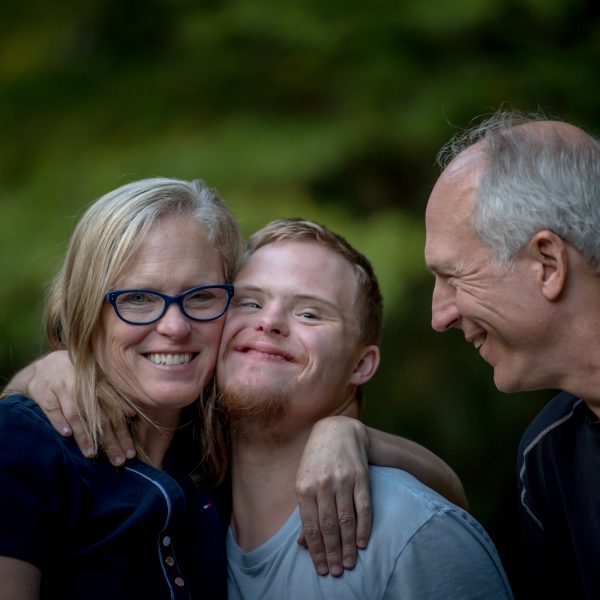ISTOS proposes solutions to social and educational issues

The Inclusive Education and Social Support to Tackle Inequalities in Society (ISTOS) consortium has released a series of case studies on curriculum, pedagogy, and educational climate interventions tackling inequalities in the education sphere, encompassing solutions trialled in, and relevant for, Australian early childhood education and care (ECEC) services.
Background and theoretical perspectives
ISOTIS’ work focuses on curriculum, pedagogy and social climate, using the bioecological model of human development proposed by educational theorist, Urie Bronfenbrenner. In its simplest form, Bronfenbrenner’s theory places the child at the centre of a circle, influencing all the systems around them, as they in turn are influenced by the systems they become a part of.
The report authors consider Bronfenbrenner’s work to be “an overarching lens to understand the constellation of dynamic, multilevel, and interrelated influences on children’s competence development” and “an invaluable conceptual framework for analysing the multilevel success features and facilitators of interventions aiming to transform educational environments and support students’ learning and development”.
According to Bronfenbrenner’s model, and the research conducted by ISOTIS, children develop through stable, consistent, predictable and progressively more complex interactions between themselves and the people, objects and symbols in their immediate environment.
Interactions are considered the “engines of development”, with their power and value varying dependant on:
- the person’s behavioural dispositions, resources, and demand characteristics;
- the features of the immediate and extending contexts (the concentric circles in the graphic above); and,
- time.
Bronfenbrenner believed that the immediate contexts of children’s experiences or microsystems involve a “pattern of activities, social roles, and interpersonal relations experienced by the developing person”. Using the concept of three microsystems, he outlined the way that children’s sociocultural experiences and opportunities for competence development depend on the influence of the world around them.
European research, Australian context
The Case studies on curriculum, pedagogy, and school climate interventions tackling inequalities report focuses on seven in-depth case studies of curriculum, pedagogy, and/or social climate interventions from distinct geographic regions in Europe, giving a cross section of experiences, solutions and proposals from diverse income levels, research traditions, education and welfare systems and immigration integration policies.
Although European in context, the findings – collated in England, Germany, Greece, Italy, the Netherlands, Poland, and Portugal – will be of interest to the Australian ECEC sector and context as researchers, practitioners, and policy makers seek to design best practice interventions for Australian children. The research is especially timely as the sector undertakes a review of its core components, such as the National Quality Framework, and the newly released 2018 AEDC data.
Core messages
The report showcases the key successes and main facilitators of interventions, approaches, programs and projects in seven European countries, across both primary and ECEC sites, tackling educational inequality through a perspective of multiculturalism, finding that the most successful methods used curriculum design and implementation, educator practices, and/or the educational setting’s social climate to combat inequality and integrate meaningful multicultural perspectives.
Report authors hope that through sharing their work, they will increase the current knowledge base, offer transferable solutions, promote inclusion, increase belonging, identify obstacles, and describe and analyse solutions.
Harking back to Bronfenbrenner’s work as summarised above, the authors found that the most successful systems had features which focused on supporting culture and values of the setting, which then influenced ‘outwards’ in what the authors describe as a ‘cultural microsystem’.
The authors found that the most common obstacles encountered in the study were:
- funding
- program design
- multiaged grouping – especially in school settings
- children and families moving on from the site
- staff beliefs and attitude
- limited training and experience of staff
- staff turnover, family/parent disconnect,
- lack of family involvement
- language integration (families reluctant to embrace the use of languages other than english in the educational program)
- lack of co-operation and consistency across communities.
Potential solutions
The authors believe “much can be done at all levels of the ecological system” providing a wide range of options in their final work, relevant to practitioners and policy makers. Most of the interventions and improvements proposed by the authors are “grass roots” and targeted to those working at ‘site level’ – in a school or ECEC service or setting. This, the authors said. “highlights the significant role of educators and onsite leadership”.
Multiple suggestions were identified throughout the case study process, with common threads focusing on:
- clear funding strategies
- strong commitment from leadership
- an embedded professional-development component
- building on available resources or allocating specialised resources to provide onsite support to individual professionals and the whole organisation.
In terms of how the issues of embedding multicultural perspectives and tackling educational inequality could be addressed, the report authors identified that most interventions in this space were “easy to identify but varied greatly” with different topics or drivers at the centre.
Solutions put forward involved a mixture of content integration, equity pedagogies, prejudice reduction activities, empowering educational cultures, and critical approaches to the knowledge construction process.
However, the authors said, there does not seem to be consistency at the centre of intervention design, nor do the interventions come together often within trans-formative interventions. Notably, many of the interventions did not have a reduction of prejudice or discrimination explicitly addressed as a central goal, though this is often a “side effect” of effective programs.
Local, external support
The authors also studied interventions that tackle inequalities by providing additional support to selected children at risk for social and educational inequalities, based on additional activities, delivered within the educational setting, but designed and implemented by external resources, funded through (often temporary) local projects.
These local targeted interventions were often able to compensate for limitations of the site, and address the needs of children at risk of, or already experiencing disadvantage and inequality through the “mobilising of key community resources”
Authors found that external resources “can be essential in bringing about desired changes in practice and social climate towards equity and belongingness” before suggesting that such external resources could be mobilised through different solutions that would then ensure stability in implementation. They suggest allocating structural funds to educational settings to acquire external services or giving municipalities (such as local governments) a prominent (funding) role in orchestrating partnerships between educational settings and external organisations.
Recommendations
The authors lobby for an “expanded and comprehensive view of what conditions are needed to design and implement successful interventions”, saying it was important for all sites involved in working with children to “look beyond activities, roles, and relationships to include reciprocal family/service relationships; staff selection, training, and continuing supports; as well as embeddedness in a strong institutional equity culture”.
Most of the recommendations identified by the authors encompass:
- features of high-quality program design;
- alignment with site needs, values, and culture;
- family participation;
- frequent, regular, and increasingly more complex use by target groups; and,
- sustainability.
Drawing attention to the work of Banks and the five dimensions of the multicultural education framework, the authors said Banks’ work “merits greater consideration and integration to ensure a transformation towards equity”, saying that the dimensions “may serve as paths to value heritage cultures and promote positive contact more systematically”.
In closing, authors built on their previous work, with the Case studies on curriculum, pedagogy, and school climate interventions tackling inequalities study highlighting the role of high-quality research designs to ensure success in developing and implementing effective interventions.
Next steps
The next step within ISOTIS, authors said, would be to use the information gathered in the case studies process, and previous research, to develop a virtual learning environment prototype for professionals with a focus on cultural awareness and plurilingual competence in children and families to support findings.
The Case studies on curriculum, pedagogy, and school climate interventions tackling inequalities report may be viewed in full here, with more information about the work of ISOTIS available here.
Popular

Quality
Practice
Provider
Research
Workforce
Honouring the quiet magic of early childhood
2025-07-11 09:15:00
by Fiona Alston

Practice
Provider
Quality
Research
Workforce
New activity booklet supports everyday conversations to keep children safe
2025-07-10 09:00:16
by Fiona Alston

Quality
Practice
Provider
Workforce
Reclaiming Joy: Why connection, curiosity and care still matter in early childhood education
2025-07-09 10:00:07
by Fiona Alston












